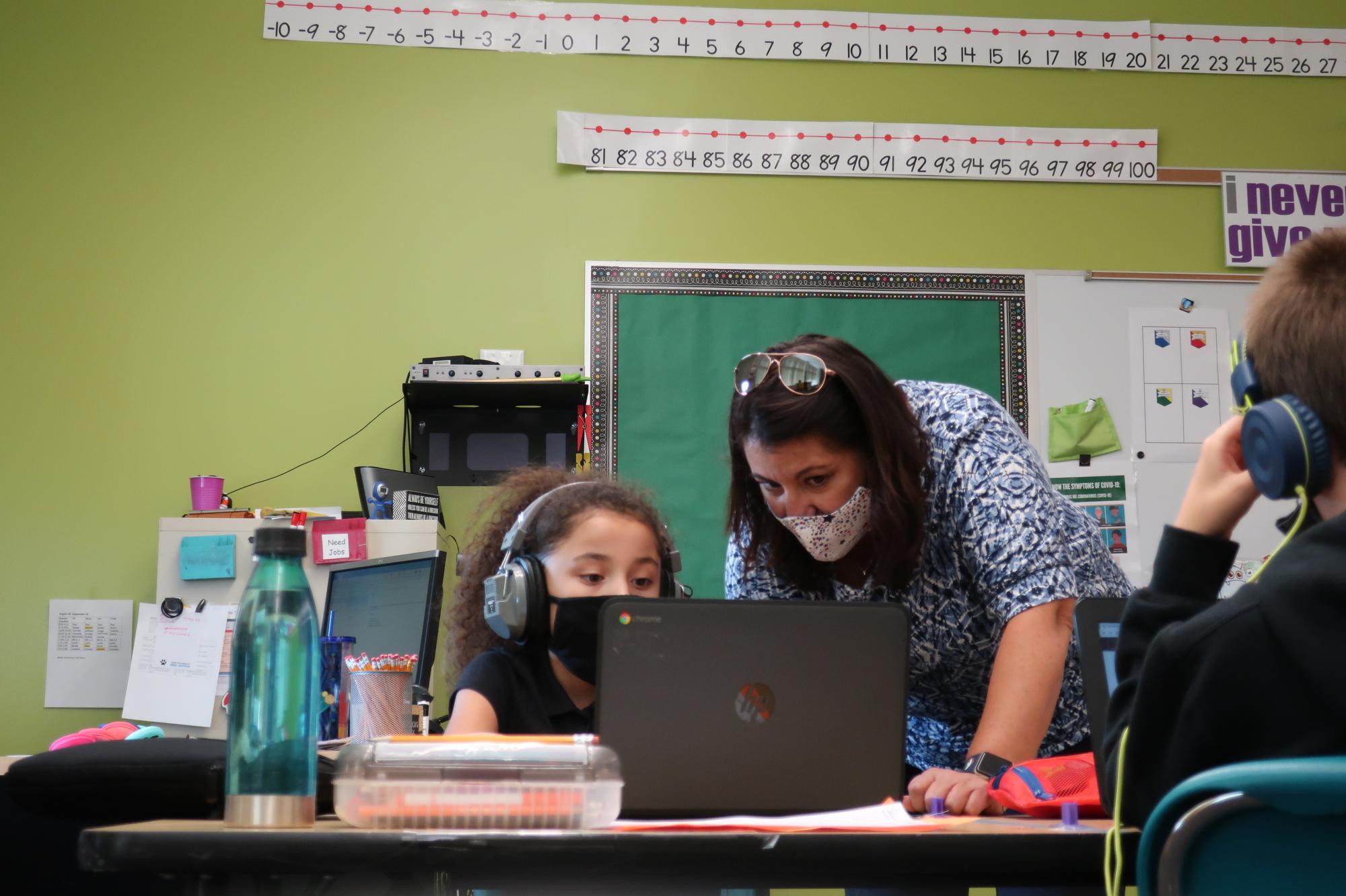
The pandemic inflicted damage on Colorado students’ ability to learn, or at least perform on state standardized tests. Newly released test state-level results show significant decreases in achievement of testers from 2019 to 2021 across all tested grades and subject areas.
“We recognize how hard students and teachers worked through the difficulties during last school year, and we know that there were reduced or disrupted learning opportunities for students, schools and districts,” said Colorado Education Commissioner Katy Anthes. “These test results give us sobering data that confirm just how hard last year was with school closures, class quarantines and remote learning.
The tests are intended to provide insight on what students know and can do in relation to grade level standards. Because participation rates were down significantly across the state and test conditions varied widely, officials say the results should be viewed as a “temperature check” to identify where more support is needed. State education leaders said in some cases, conclusions should be drawn with caution or completely avoided.
“These scores follow what I think a lot of us expected,” said Joyce Zurkowski, chief assessment officer with the Colorado Department of Education.
She cautioned educators and parents to remember that the tests provide only one point-in-time snapshot of what students know.
Students had to adapt to a variety of learning models – in-person, online or a mix of the two (hybrid.) Because many Colorado students weren’t inside their schools that much, teachers had to cut back on the amount of content they could teach. State officials said it’s also likely learning disruptions were unequal across districts.
After a lengthy debate earlier this year over whether educators should give spring tests in the middle of a global pandemic, federal officials announced that states had to give the tests, though some flexibility was granted. Colorado lawmakers opted to scale back testing to one test per grade level – math or reading. Third, fifth and seventh grade students took the English language arts tests; and fourth, sixth and eighth graders took the math tests. Parents could opt-in their children to take both tests, but less than 10 percent did.
Every grade and subject area saw a decline since 2019. Tests were cancelled in 2020.
For example, about 39 percent of the state’s third graders are reading at or above grade level, down 2.2 percentage points from 2019, while in math, 24 percent of sixth graders met or exceeded expectations, dropping 5.4 percentage points between the two testing years.
“These CMAS results indicate that the demonstrated performance in math has dropped to the lowest it has ever been and in English language arts has dropped to 2017 levels,” said Zurkowski.
Of note, girls’ performance dropped more steeply than boys in both English and math, though the trends of girls outperforming boys in English and boys outperforming girls in math remained the same.
Students of all races and ethnicities decreased in performance, with Black and Hispanic students scoring significantly lower than white and Asian students. In third grade reading for example, while 48.9 percent of white students are reading at or above grade level, just 22.1 percent of Hispanic students and 24.3 percent of Black students are. About 32 percent of white sixth graders are meeting or exceeding expectations in math, while about 11 percent of Black students are and about 10 percent of Hispanic students are. Among Asian sixth graders, 48.3 percent were at or exceeded grade level.
There continues to be gaping achievement gaps between poor students and their wealthier peers – roughly 30 percentage points separate them in third grade English and about 24 percentage points in sixth grade math. Results for students with disabilities and English learners continue to be significantly lower than other subgroups, with the gap actually increasing in some cases.
"Others often interpret lower scores in some schools as evidence that those schools are not doing a good job, but the fact of the matter is, schools are educating student populations that have greater educational challenges with access to minimal resources and supports," said Amie Baca-Oehlert, a high school counselor and president of the Colorado Education Association, the state's largest teachers union. "Federal stimulus funds can be used to address some of these issues and educators, those who actually work with students on a daily basis, should be at the forefront of these conversations."
CDE’s Zurkowski offered a number of possibilities to explain why some historically large achievement gaps grew even larger during the pandemic. The health impacts of COVID-19 were larger on Black and Hispanic students and their families than for white students. Some school districts were unable to provide each student with a laptop and connectivity problems were much more widespread in low-income neighborhoods. Not all students had quiet places to learn at home, as well.
“There were some students who may have had designated spaces to engage in their learning,” she said. “Other students might've been sharing those spaces, not just with their siblings but also with grandparents.”
She said there were differences in the ability of families to supplement what schools could provide, such as extra tutoring.
How many students took the tests?
Test participation rates for districts, schools and student groups were significantly lower overall than in past years. Typically, participation rates are above 95 percent. During this spring’s pandemic, participation rates dropped 20 to 30 percentage points. Fewer than 60 percent of all eighth graders took the math test. Metro Denver and rural Colorado had the lowest test-taking rates. The lower the participation, the more difficult it is to interpret results, officials said.
Test-taking participation varied between groups of students – with fewer Black and Hispanic students taking tests than white students. Officials said if everyone who usually takes the assessments participated in last spring’s tests, the overall results would probably have been even lower.
College entrance exams: PSAT and SAT
Fewer students took college entrance exams last spring (ninth and 10th graders took the PSAT and 11th graders took the SAT.) In 2019, nearly 93 percent of students took the SAT. Last spring it dropped to about 80 percent. For the SAT, 60 percent of students met or exceeded expectations in the evidence-based reading and writing, meaning they met the College Board benchmark for college and career readiness. In the math section, 36.4 percent of students met or exceeded expectations. The test score gap was about 30 percentage points in reading and math sections between white students and their Black and Hispanic peers.
This school year will be a time to recover academic skills
Education Commissioner Anthes said that schools “must accelerate learning” more than they have done historically.
“If we just go back to doing what we have done before, we will not be successful,” she said, adding that learning should be able to accelerate dramatically with additional federal stimulus dollars.
District-level and school-level results are expected to be released by CDE by the end of August. Families will receive an individual report for their students. The state has resources to help parents understand what their student’s test results mean and how they can be used to help their children. Additionally, the state is offering educators access to a toolkit to help them counter COVID-19’s learning impacts.









